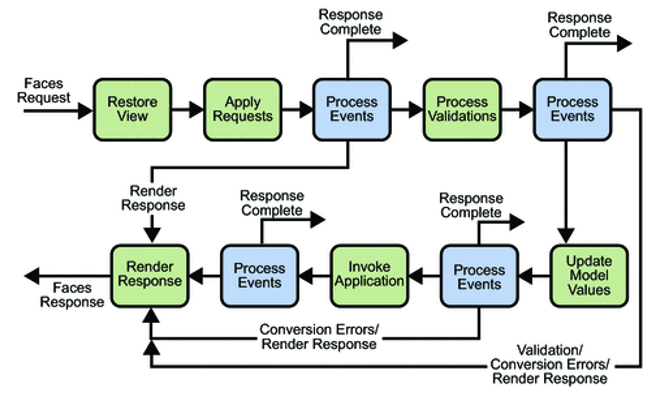Home »
Full Forms »
Technology Full Forms
What is the full form of JSF?
Full form of JSF: Here, we are going to learn about the JSF, full form of JSF, overview, working, advantages, disadvantages, etc.
By Anushree Goswami Last updated : March 30, 2024
JSF: JavaServer Faces
JSF is an abbreviation of JavaServer Faces. It is a substructure that aids a user to build user interfaces for JavaServer applications. It makes available for use a quality order of tools for developing a user interface. These tools make easier the development of Web applications, For e.g. To create the form a user can call a simple JSF function, in HTML a user does not require to code a Web form. Correspondingly, another JSF function enables a user to operate on data entered by another user. On the server, the JSF functions are operated and on the client's browser, the operating data is generated as output.

Prerequisite to use JSF
- A Java runtime environment
- The JSTL tags library
- JSF Implementation
- A web-container
Working of JSF
On the basis of the fundamental of a component-driven UI design-model, XML files which are known as view templates or Facelets views, used by JavaServer Faces. The FacesServlet operates on the requests, loads the suitable view template, sets up a component tree, operates on events, and gives the response usually in the HTML language to the client.
Advantages of JSF
- JSF works on the basis of the Model-View-Controller concept.
- JSF has a stateful UI component model.
- On UI components, JSF supports the listeners.
- Between UI and the model, JSF also supports data validation, data binding, and data conversion.
- From the functionality of the component, JSF splits the display of the component.
- JSF is a component-based Web framework that enables a user to create applications rapidly.
- Many component libraries such as Primefaces, RichFaces, Primefaces, ICE Faces, MyFaces and Open faces are accessible for JSF.
- The template Layout feature is inbuilt in JSF.
- For building JSF based web applications, JSF 2 is recommended which is given with Facelets technology.
Disadvantages of JSF
- The tasks that could be reached successfully very easily, by using JavaScript become a huge struggle.
- The JSF framework lets the developer down instead of rising to the instance when developing user interfaces with JSF.
- With other standard Java libraries, JSF doesn't work in a satisfactory way, with the Portal API being one, and JSTL, Java's standard tag libraries, being another.
- For fundamental interactivity with components, JSF 2.0 launched Ajax support, but more complex Ajax-based interactivity, especially ones that work with UI frameworks like bootstrap.js and ember.js, are troublesome.
- The templating framework, Facelets, is all static and makes available for use no built-in establishment for switching between faces occurring at the same time.
Advertisement
Advertisement